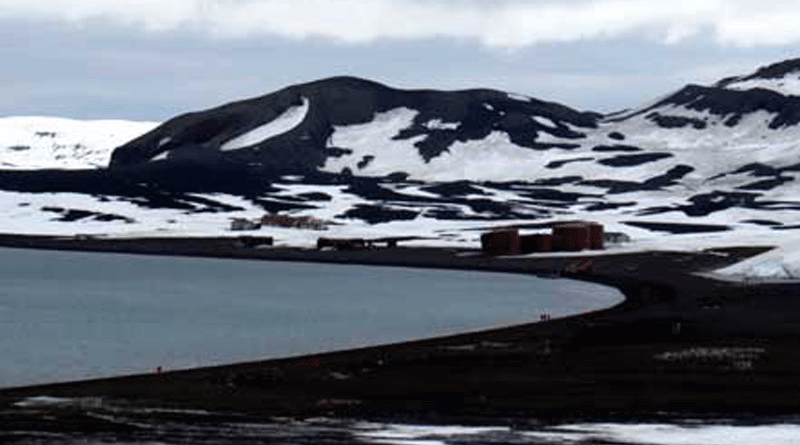DECEPTION AND YOGA IN THE ANTARCTIC
By CHANTAL COOKE

Yoga at the end of the world… forget heli-yoga and hot yoga and any other type of extreme yoga experience. There is not much that can trump doing yoga outside on the top deck of a ship, with the Antarctic peninsula as your backdrop. It’s early evening and yet the sun is high in a bright blue sky with thin streamers of cloud floating overhead. The setting could not be more beautiful.
Ok, I admit, in yoga terms there is a limit to what can be done when you are wrapped up in three layers of thermals and a down jacket, with a woolly hat and gloves – but the intensity of the session is not the point. This is yoga for the spirit. Which is apt as Antarctica is a destination that feeds the spirit. It’s almost impossible not to be awed by the immense scale of the landscape, the cruel beauty of the ice and incredible resilience of the animals that call this continent home.
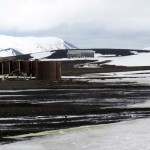
But it’s also a land of history; of the pioneers of Antarctic exploration from Captain Bellingshausen who is credited as the first man to spot the Antarctic continent in 1820 to James Clark Ross (after whom Ross Ice Shelf is named and who came here to locate the south magnetic pole) from William Spiers Bruce who sailed here in 1902 as part of the Scottish National Antarctic Expedition, to Nordenskjold and Larson whose expedition got split into three marooned parties (all of whom miraculously survived – it’s a story of amazing coincidences) to the ill-fated expedition lead by the German Filchner who, for reasons no one understands, built their base on an ice shelf which soon turned into a floating iceberg. And of course the most famous of them all; Shackleton and the men of the Endurance.
However this isn’t just a continent of great adventurers, explorers and heroes. Places like Deception Island (so named because because it appears to be a safe harbour but is actually an active volcano!) remind us of man’s greed and hubris and his total disregard for this fragile environment and its beautiful animals.
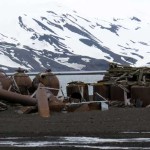
Deception Island was home to a whaling station – one of many in the area. From the early 1900s to 1960s these whaling stations were responsible for killing millions (yes, millions) of whales – almost driving some species, the right whale in particular, to extinction. In the 1930s pelagic whaling factory ships arrived; now all the processing activities that used to take place on shore could be done on the ship. As a result the number of whales killed increased considerably. Eventually the industry stopped in the 1960s – simply because there were now too few whales to make it viable.
As the whalers departed, they left behind the evidence of their time here; wooden huts, rusting metal boiling vats and giant silos that contained the oil ready for shipping.

Deception Island is beautiful with its black volcanic sand, tiny fresh water streams and the circle of snow topped peaks that enclose the bay – which is in fact the sunken caldera of the still active volcano. But it’s also a sad place scattered with the ancient bones of long dead whales rotting alongside the rusting hulks of an industry that once killed without conscience, and the stone covered graves of the men who worked and died there.
Leaving the beach behind, a short climb up the sloping sides of the caldera will take you to Neptune’s Window; a rectangular gap in the rocks that looks down into a small cove with turquoise water and foaming surf. As you gaze out across the ocean you can see the Antarctic Peninsula in the distance, and it was from this very vantage point that Bellingshausen spotted the continent – probably the first man ever to have laid eyes on it.
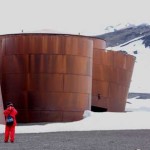
A much tougher hike will take you to the Nipple; an accurately descriptive name for an outcrop of rocks that offers wonderful views into the bay below and across the ocean to the distant ice covered landmass.
Our trip to Deception Island ended with a swim. It’s not a compulsory part of the trip, but it’s well worth doing if you have the nerve. It’s cold, it’s windy, it’s bleak, it’s starting to snow – and you’re wrapped up in at least three layers of thermals with heavy wetskins on top (and you’re probably still cold) but the aim is to strip off to your bikini/trunks and then make a mad dash down the beach and run out into the icy water.
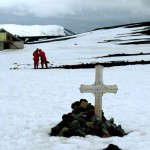
From personal experience I can say that the worst bit is removing the layers of clothing; as each is discarded the cold bites deeper. But somehow, once you are down to just your bikini, it really doesn’t feel that bad. Perhaps it’s the knowledge that you are now committed. The sand is sharp underfoot and the water bites as you rush in and push deeper into the enveloping cold. Very quickly all your senses tell you ‘that’s enough – time to get out’ and you sprint back up the beach where dozens of more sensible people, wrapped up in their thermal layers, are cheering you on. A hand thrusts a towel at me and I duck back behind one of the large rusting metal hulks to get out of the wind.
Yes, it’s cold, but not anywhere near as cold as I expected. My body is tingling and the heat is rushing to the surface mixing with the warm glow of Antarctic achievement.
Fact Box:
- One Ocean Expeditions
- British Airways flies direct to Buenos Aires. From there you’ll need to catch a domestic flight to Ushuaia to board the One Ocean Expeditions ship.

About the Author:
Chantal Cooke is an award winning journalist and broadcaster with a passion for the planet. In 2002 she co-founded the award winning radio station PASSION for the PLANET and in 2009 Chantal was awarded London Leader in Sustainability status. Chantal also runs a successful communications agency – Panpathic Communications.
This blog was posted using www.tepwireless.com – portable WiFi for smartphones, tablets and laptops.

